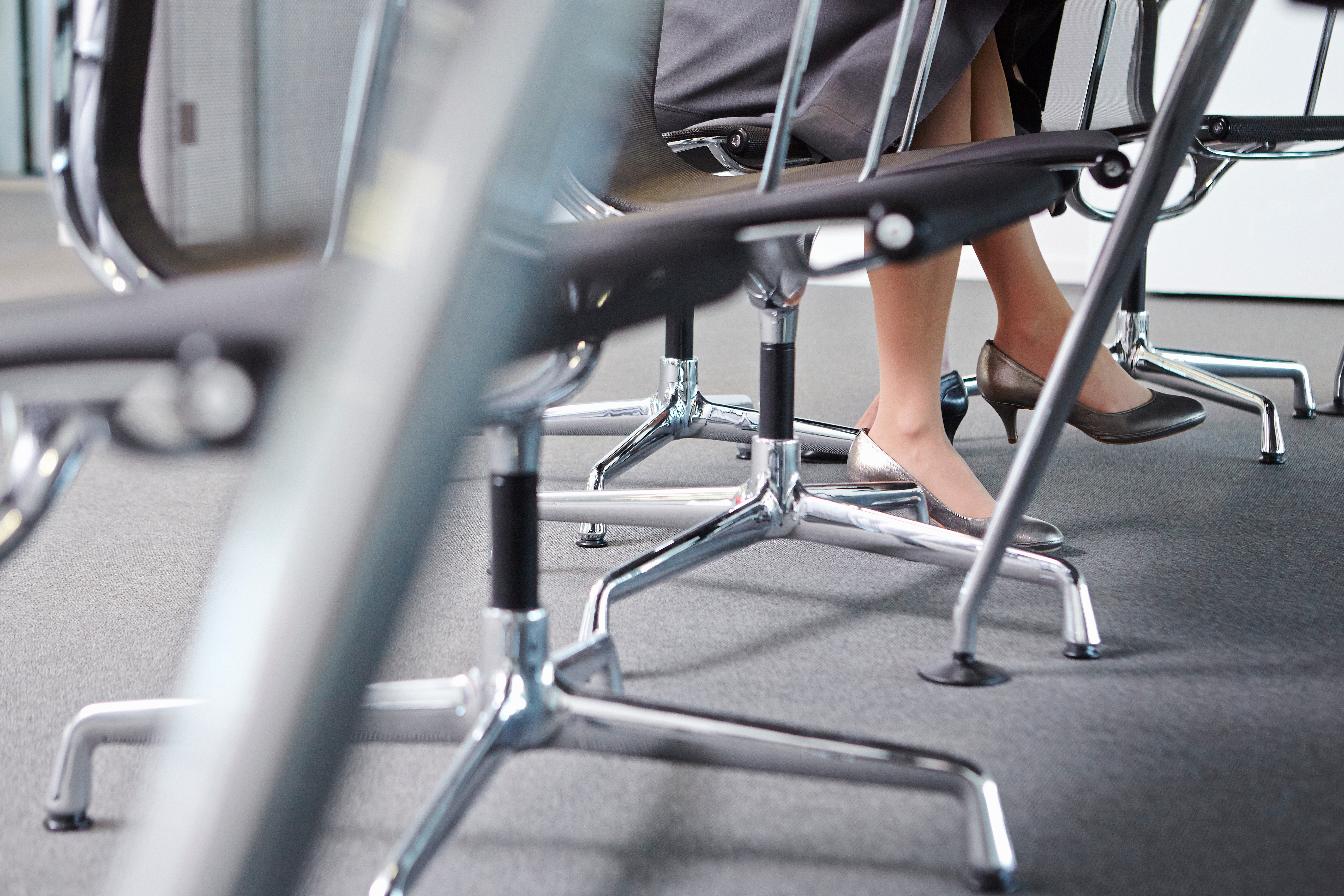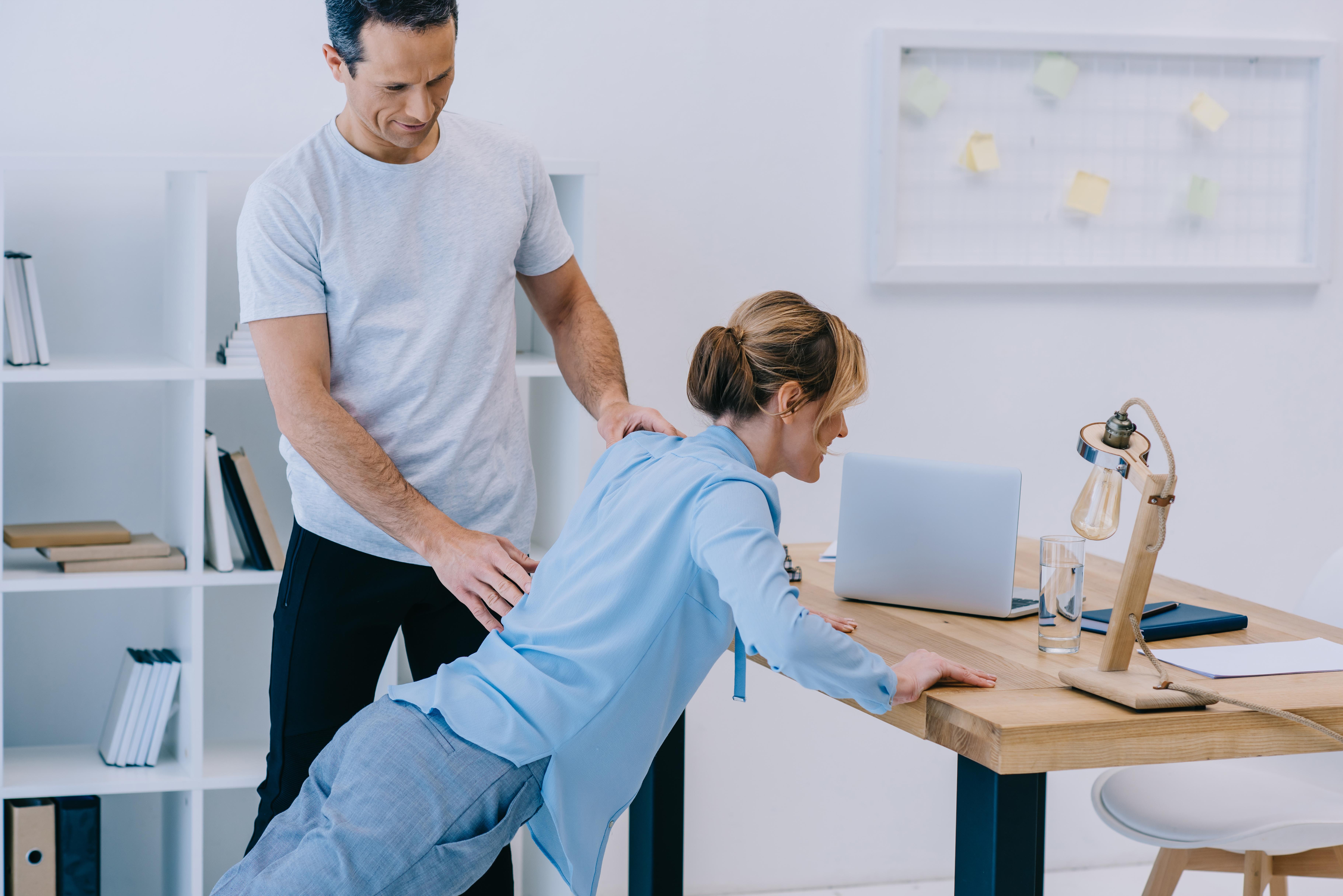Simple Desk Exercises You Can Do at Work
In the fast-paced world of modern work, where hours are spent glued to screens and tied to desks, finding moments to rejuvenate can seem impossible. However, integrating subtle desk exercises into your daily routine can transform your workday, enhancing both physical well-being and productivity. These exercises are designed to be discreet yet effective, allowing you to make every minute count without leaving your workspace. By incorporating simple movements, you can alleviate tension, boost energy levels, and improve focus. This article explores 10 subtle yet powerful desk exercises that can revitalize your workday, ensuring that every minute spent at your desk contributes to a healthier, more productive you.
1. Neck Rolls: Relieve Tension and Stress

Neck tension is a common complaint among office workers, often resulting from prolonged periods of looking at screens. Neck rolls are an excellent way to alleviate this tension and stress. Begin by sitting up straight, relaxing your shoulders, and gently tilting your head to one side. Slowly roll your head forward and to the other side, creating a half-circle motion. Repeat this movement several times in each direction. This exercise helps to stretch and relax the neck muscles, reducing stiffness and improving circulation. By regularly practicing neck rolls, you can prevent headaches and maintain better posture throughout your workday.
2. Seated Torso Twists: Boost Flexibility and Focus

Seated torso twists are a subtle yet effective exercise that can enhance flexibility and refocus your mind. To perform this exercise, sit upright with your feet flat on the floor. Place your right hand on the back of your chair and your left hand on your right knee. Gently twist your torso to the right, holding the position for a few seconds, and then return to the center. Repeat on the opposite side. This movement stretches the spine and oblique muscles, promoting better spinal health and flexibility. Additionally, the act of twisting can help to clear your mind, allowing you to return to tasks with renewed concentration.
3. Wrist and Finger Stretches: Combat Repetitive Strain

With the constant use of keyboards and mice, wrists and fingers are prone to repetitive strain injuries. To counteract this, wrist and finger stretches are essential. Extend one arm in front of you with the palm facing down. Use your other hand to gently pull back on your fingers, stretching the wrist and forearm. Hold for a few seconds before switching to the other hand. You can also perform finger stretches by spreading your fingers wide and then clenching them into a fist. These exercises help to increase flexibility, reduce stiffness, and prevent conditions like carpal tunnel syndrome, ensuring your hands remain agile and pain-free.
4. Seated Leg Lifts: Strengthen Core and Lower Body

Seated leg lifts are a discreet exercise that targets the core and lower body, essential for maintaining strength and stability. Sit comfortably in your chair with your back straight and feet flat on the floor. Slowly lift one leg until it is parallel to the ground, hold for a few seconds, and then lower it back down. Repeat with the other leg. This exercise engages the abdominal muscles and strengthens the quadriceps, promoting better posture and balance. Regularly practicing seated leg lifts can help to counteract the negative effects of prolonged sitting, keeping your lower body strong and your core engaged.
5. Shoulder Shrugs: Relieve Upper Body Tension

Shoulder shrugs are a simple yet effective way to release tension in the upper body, often accumulated from long hours of sitting. To perform shoulder shrugs, sit or stand with your back straight and arms at your sides. Inhale deeply and lift your shoulders towards your ears, holding the position for a few seconds. Exhale and release your shoulders back down. Repeat this movement several times. Shoulder shrugs help to relax the trapezius muscles, improve circulation, and reduce stress. Incorporating this exercise into your routine can alleviate neck and shoulder pain, allowing you to feel more relaxed and focused throughout the day.
6. Ankle Circles: Enhance Circulation and Prevent Stiffness

Ankle circles are a subtle exercise that can significantly enhance circulation and prevent stiffness, especially for those who spend long periods sitting. While seated, lift one foot off the ground and rotate your ankle in a circular motion. Perform several circles in one direction before switching to the other direction. Repeat with the opposite foot. This exercise promotes blood flow to the lower extremities and helps to prevent swelling and stiffness in the ankles and feet. By regularly performing ankle circles, you can maintain flexibility and reduce the risk of developing conditions like deep vein thrombosis, ensuring your legs remain healthy and mobile.
7. Seated Marching: Increase Heart Rate and Energy

Seated marching is an invigorating exercise that can help to increase your heart rate and boost energy levels without leaving your chair. Sit upright with your feet flat on the floor. Begin by lifting one knee towards your chest while keeping the other foot on the ground. Alternate legs in a marching motion, gradually increasing the speed. This exercise engages the core and leg muscles, promoting cardiovascular health and increasing blood circulation. Seated marching is an excellent way to combat fatigue and enhance alertness, allowing you to tackle your work tasks with renewed vigor and enthusiasm.
8. Desk Push-Ups: Build Upper Body Strength

Desk push-ups are a fantastic way to build upper body strength and can be performed using the edge of your desk. Stand a few feet away from your desk and place your hands shoulder-width apart on the edge. Keeping your body straight, bend your elbows and lower your chest towards the desk, then push back up to the starting position. This exercise targets the chest, shoulders, and triceps, helping to tone and strengthen the upper body. Desk push-ups are an effective way to incorporate strength training into your workday, ensuring that you maintain muscle mass and improve overall physical fitness.
9. Eye Exercises: Reduce Digital Eye Strain

In the digital age, eye strain is a common issue for those who spend extensive time in front of screens. Eye exercises can help to alleviate this strain and improve visual comfort. The 20-20-20 rule is a simple exercise to follow: every 20 minutes, take a 20-second break to look at something 20 feet away. Additionally, you can perform eye movements by looking up, down, left, and right without moving your head. These exercises help to relax the eye muscles, reduce fatigue, and prevent headaches. By prioritizing eye health, you can enhance focus and productivity, making your workday more efficient.
10. Deep Breathing: Calm the Mind and Body

Deep breathing exercises are a powerful tool for calming the mind and body, especially during stressful work moments. Sit comfortably with your back straight and close your eyes. Inhale deeply through your nose, allowing your abdomen to expand, and then exhale slowly through your mouth. Repeat this process several times. Deep breathing helps to reduce stress, lower blood pressure, and increase oxygen flow to the brain, promoting relaxation and mental clarity. By incorporating deep breathing into your routine, you can manage stress more effectively and maintain a sense of calm and focus throughout your workday.
Integrating Desk Exercises for a Healthier Workday

Incorporating these 10 subtle desk exercises into your daily routine can transform your workday, making every minute count towards a healthier, more productive you. From relieving tension and stress with neck rolls to boosting energy with seated marching, these exercises offer a comprehensive approach to enhancing physical and mental well-being. By prioritizing movement and mindfulness, you can counteract the negative effects of prolonged sitting and screen time, ensuring that your work environment supports your overall health. Embrace these exercises as part of your daily routine, and experience the revitalizing benefits they bring to your workday and beyond.